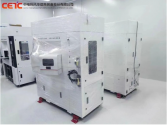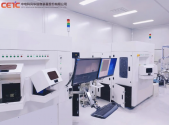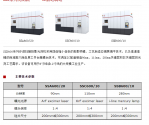Semiconductor defect detection equipment Mars 4410 has been successfully shipped! China Electronics Technology Co., Ltd. escorts the development of my country's third-generation semiconductor industry
Recently, CETC Fenghua Information Equipment Co., Ltd. launched the first third-generation semiconductor wafer defect detection equipment with completely independent intellectual property rights—Mars 4410. At present, the equipment has been sent to many domestic customers for use.

Mars 4410 is the key equipment in the silicon carbide device production line, used for defect detection of silicon carbide substrate wafers, epitaxial wafers, and corrosion wafers. After two years of unremitting efforts, the design team has overcome the core key technologies of optical detection such as laser scattering and microscopic imaging.
The equipment adopts various inspection methods such as differential interference phase contrast, photoluminescence, and dark field. Wafer inspection can be processed in parallel with data analysis. Wafer defects can be associated with device failure. It has low noise and high-resolution imaging, and high detection The advantages of throughput, high detection rate and accuracy can meet the needs of improving the yield of SiC devices.

Under the support and guidance of national, provincial and municipal industrial policies, CETC Fenghua has accelerated technological research, launched silicon carbide defect detection equipment, filled the domestic gap, broke international monopoly, realized import substitution, and actively responded to the urgent need for the development of my country's third-generation semiconductor industry. demand, and solved the "stuck neck" technical problem. China Electronics Technology Fenghua Company will continue to devote itself to the independent and localized construction of the industrial chain, and escort the independent controllable and high-quality development of my country's third-generation semiconductor industry!

